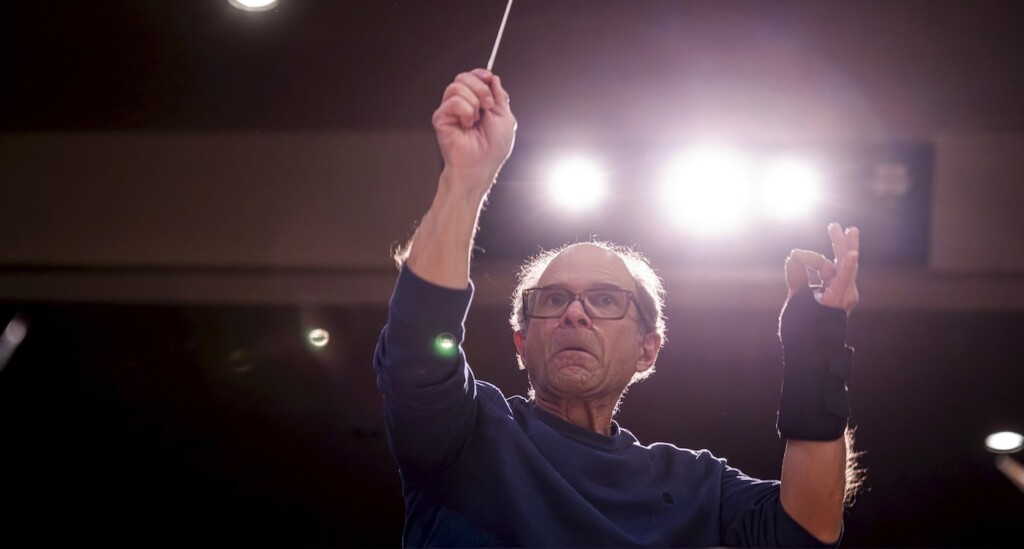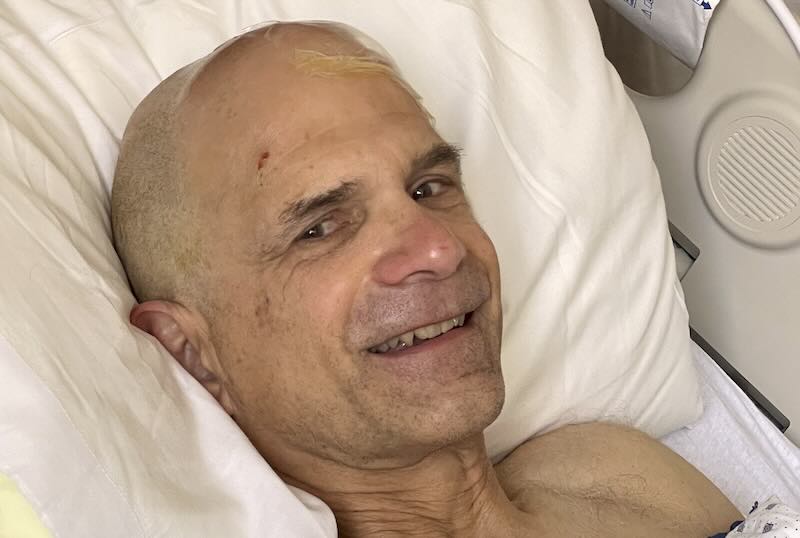 Rand Laycock conducting orchestra – Courtesy of Cleveland Clinic
Rand Laycock conducting orchestra – Courtesy of Cleveland ClinicAn Ohio music conductor dealing with Parkinson’s disease was fitted with a ‘pacemaker for the brain’ allowing him to control his tremors and lead his orchestra once again.
Rand Laycock was diagnosed with Parkinson’s 11 years, just before his 60th birthday, after going to his doctor with a twitch in his thumb.
Rand’s symptoms progressed over the years and he started to experience a tremor in his right hand, which became more noticeable if he had a looming deadline with his 100 piece orchestra.
Unable to control his shaking with medications alone, Rand learned about deep brain stimulation (DBS) at the Cleveland Clinic, and underwent surgery last year to insert the stimulation leads and battery—and now his tremor has nearly disappeared.
“My tremor is almost all gone, except if I experience extreme anxiety or stress,” the conductor said in a media release. “And my dyskinesia is pretty well under control.” (See the remarkable difference in the video below…)
“When I was diagnosed 11 years ago, my doctor at the time told me this wasn’t a death sentence, and there would be advancements over the next few years to help with my treatment. And here I am today with adaptive deep brain stimulation – something we didn’t even know about at the time,” says Rand of Olmsted Falls, Ohio.
ALSO CHECK OUT: Man Living with Tremors for 30 Years Is Cured by Ultrasound Beam Paid by Medicare: ‘It’s unbelievable!’
“I know the thought of brain surgery can be intimidating, but it’s a life-changing procedure that allows you to become your own self again.”
 Rand Laycock after surgery – Courtesy of Cleveland Clinic
Rand Laycock after surgery – Courtesy of Cleveland ClinicDr. Michal Gostkowski, DO, a neurologist at Cleveland Clinic explained that DBS involves implanting a device to deliver electrical currents to specific parts of the brain that control movement, which helps to modulate the abnormal brain signals caused by Parkinson’s.
He first underwent operations to insert the stimulation leads and implant the stimulator battery before having the device activated by programmer Erica Hennigs.
She explained, “When it comes to programming the device, we try different settings at first. We then adjust those during follow-up visits as we learn more about how his symptoms are being controlled.”
Rand saw success with DBS for nearly a year, and then he learned about a new advancement called adaptive deep brain stimulation (aDBS).
Although not everyone with DBS needs this adaptive technology, Rand was a good candidate for it because his symptoms fluctuated throughout the day.
MORE SUCCESS WITH PARKINSON’S:
• Severe Shaking in Parkinson’s Patient Calms Down in Just 6 Days With New Drug –Watch the Transformation
• This is the Gene That Could Prevent Parkinson’s Disease
Since his overall experience with DBS had been positive, Rand was eager to try the new adaptive technology.
“It sounded like it would make my life simpler – not having to worry about adjusting my device settings and medications as frequently.”
Erica confirmed that fine-tuning with aDBS would reduce the risk of him experiencing tremors if his medication were to wear off in the middle of a concert or performance.
AMAZING: Boy Invents Smart Spoon for His Uncle’s Trembling Hands that Is Affordable in India
In March, Rand started using aDBS and now his tremor is almost gone—and he looks forward to his 47th year of conducting.
“My symptoms are minimal compared to the way they were and a lot of that is due to the adaptive deep brain stimulation.”
WATCH the video from the Cleveland Clinic…
SHAKE UP EXPECTATIONS FOR PARKINSON’S By Sharing This On Social Media…
Source link

